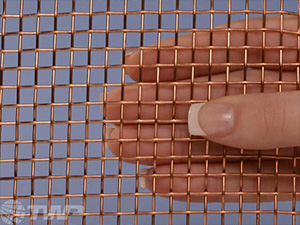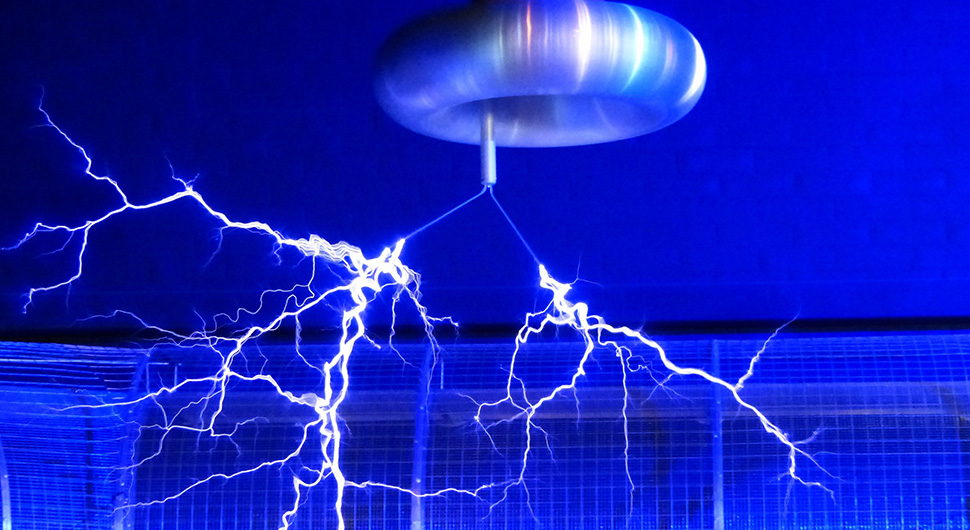Electronic devices continuously produce electromagnetic waves (sometimes called radiation or radiant energy). This energy is generated in the form of radio waves, microwave radiation, X-rays, gamma rays, or infrared light. The waves can negatively impact other electronics, an effect known as radio frequency interference (RFI) or electromagnetic interference (EMI).
Faraday cages are used to prevent electromagnetic disruptions. Invented by Michael Faraday in 1836, these shield-like enclosures are made with woven metal sheets to block radiant energy—specifically copper mesh.
Why Do Faraday Cages Use Copper Mesh Shielding?
 RFI and EMI can cause malfunctions or damage to electronics. For instance, electromagnetic waves might suppress a device's signals, emit disruptive radiation internally, or lead to external interference from nearby equipment.
RFI and EMI can cause malfunctions or damage to electronics. For instance, electromagnetic waves might suppress a device's signals, emit disruptive radiation internally, or lead to external interference from nearby equipment.
Faraday cage manufacturers use copper wire mesh to create a conductive covering. This is called EMI or RFI shielding. When wrapped around the enclosures, metal hardware cloth essentially safeguards electronics from damage and helps ensure they run properly.
Why copper? The material is known for its electric conductivity. Additionally, it's notably thermal and easy to bend compared to other metal mesh products. Considering its malleability, copper woven cloth is also impressively strong. These characteristics make it ideal for Faraday cages.
RFI Shielding in the Age of Tech
As the world becomes increasingly digitized, electronic devices are all but everywhere. EMI and RFI are most often generated from large equipment to smaller electronics, but small devices can transmit disruptive waves too.
The fact is, billions of electromagnetic waves constantly float through the air. In many cases, the effect is harmless, though it can cause problems for various industries.
The following systems and environments can generate electromagnetic interference:
- Battlefield tactic meters
- Computer labs
- GPS navigation
- Ground planes
- Hand-held computers
- Microwave ovens
- MRI machines
- Recording studios
- Smart meters
- Stealth technology
- Telecommunication systems
- Test chambers
- X-rays
In the instance of a microwave, the device has built-in EMI shielding to protect its surroundings. However, other systems use Faraday cages to safeguard valuable equipment from external interference.
What is Copper Wire Mesh Used For?

In terms of industrial applications, the material is most often used for RFI shielding and HVAC systems. Additionally, copper mesh cloth is a popular choice among homeowners for DIY projects, such as insect screens, gutter guards, soffit coverings, fireplace screens, cabinetry, papermaking, and decorative pieces.
Like other metals, it's also naturally antimicrobial, meaning viruses and bacteria can't survive on the surface. Plus, the conductive material creates a hostile environment for these microorganisms, killing them on contact. These attributes make copper woven wire a top choice for face masks and other PPE (personal protective equipment).
Industrial Woven Wire Mesh from TWP Inc.
Since 1969, TWP Inc. has been a premier supplier and fabricator of wire mesh for both industrial and residential use. Our woman-owned company is proud to carry industrial-grade hardware cloth made of over 99% pure commercially woven copper. We adhere to NASA Design Guidelines for Shielding Effectiveness, which outlines requirements for conductive woven materials.
We've got copper wire mesh in a variety of widths, wire diameters, and weave sizes. If you don't see the exact size, shape, length, or quantity you're looking for, TWP Inc. can accommodate a custom order. Our in-house fabrication services include cleaning, measuring, slitting, and laser cutting. We also stamp and cut metal mesh discs into very precise sizes.
As one of the top wire mesh suppliers worldwide with over 50 years in the industry, TWP Inc. is here to answer all your questions and provide you with a material that fits your specific needs. Contact us today or request a free quote on a custom order.
Want to discover more about what's trending in your industry? Connect with TWP Inc. on LinkedIn for the latest on wire mesh materials and applications.
Another benefit of using copper mesh is that the material is optical, meaning you can see through it from both sides. For example, the window on a microwave oven uses woven wire to contain electromagnetic radiation while still allowing you to see the food inside.




